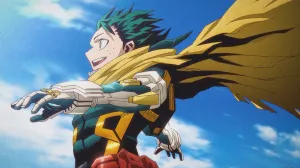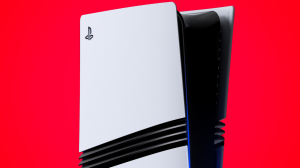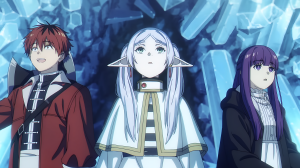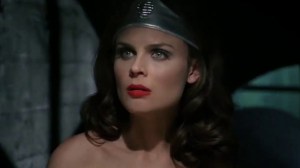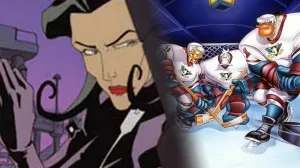Now that it’s been out for a few months, it seems safe to say that Persona 5 Strikers is a bit of an odd duck in the franchise. Now that it’s bad — far from it — but the Persona 5 spinoff marks several firsts for the franchise in its construction and gameplay and characters. And ComicBook.com recently had the opportunity to interview via email Daisuke Kanada, Persona 5 Strikers producer for Atlus, and Kazutoshi Sekiguchi, director of Persona 5 Strikers for Koei Tecmo, all about it.
Videos by ComicBook.com
Warning: beyond this point, there be spoilers for Persona 5 Strikers.
If you aren’t familiar, Persona 5 Strikers sees the cast of Persona 5 take off around Japan to solve similar, but not too similar, incidents from the first game. A detective from Kyoto, Zenkichi Hasegawa, involves the group in aiding his investigation and through the course of the game’s events the Phantom Thieves add a new member in the form of an AI named Sophia. Oh, and it’s a musou title, which means it plays a bit like the Dynasty Warriors franchise with elements of Persona on top. Needless to say, there was plenty to ask about.
Persona 5 Strikers itself is available now for the PlayStation 4, Nintendo Switch, and PC via Steam. You can check out all of our previous coverage of the popular Persona gaming franchise right here.
Have you had a chance to play Persona 5 Strikers yet? What have you thought about the latest Persona spinoff? Let us know in the comments, or feel free to reach out and hit me up directly over on Twitter at @rollinbishop to talk about all things gaming! And keep reading to check out our full interview with Sekiguchi and Kanada!
On the Inspiration for Persona 5 Strikers

ComicBook.com: What was the inspiration behind creating Persona 5 Strikers?
Daisuke Kanada: Our first opportunity came from Koei Tecmo Games, who asked us to work together on an action game.
We knew that Omega-Force had done some great collaborations with various other titles, so we were honored and surprised to be approached by them.
Kazutoshi Sekiguchi: At the very beginning, we proposed the game as an “all-star” game featuring all kinds of characters from across the series, which is often our approach for Musou action games. I think this was right before the release of P5 in Japan.
After its release, we of course played it and were astounded… Afterwards, we had many discussions, and eventually settled on making P5S a narrative sequel to P5. I think P5 featured a lot of flashy, fast-paced action scenes that would translate great into action gameplay. So from the beginning, we were confident that if we could incorporate this stylish action into the exhilarating action that we are known for, it would turn out great.
On Persona 5 Strikers Being a Musou Title
Given that this is the first time we’ve had a Persona musou, what was the process behind deciding that this would be the next spinoff for the franchise?
Kanada: When we decided to collaborate with Omega-Force, we knew it was going to be a new vision of Persona 5 with action elements.
We had plenty of discussions about what kind of specific action we wanted to add to the game.
Sekiguchi: In early development, there were discussions among the team about the direction we should take: whether to proceed as a P5 action RPG, or a P5 Musou action game. We were initially leaning towards the idea that it would be a P5 Musou action game, but as our discussions continued with Atlus, we realized that P5 players were more likely to enjoy something more in the “action RPG” direction, and that was the vision we should strive for. In addition, the development team felt that if we didn’t go in the direction of an action RPG, we wouldn’t be able to fully express the “Persona-ness” of the game mechanics, such as attacking enemy’s weak points and shielding your own. With this in mind, we refined each element of the game toward that end.
Kanada: In the end, I think we ended up with a gaming experience that could only have been reached through this collaboration.
On New Characters

Strikers does introduce two new important characters in the form of Sophia and Zenkichi. Why the major focus on AI in the spinoff and especially the personified AI Sophia?
Sekiguchi: Once we came to the decision of making this a sequel to P5, I had an idea to have an AI show up in the story and so that’s what I proposed. I felt that the theme of P5 was “human cognition.” A thought came to me that assuming we were to create an AI as close to a human as possible, would it develop its own personal cognition? And if it did, how would that perspective differ from ours as humans? I wouldn’t say that thought took exactly that shape in the game, but the idea of focusing the story around an AI was something that Atlus’ side also agreed with at the beginning of the project.
Kanada: As you may be aware, AI technology has progressed in leaps and bounds. Persona often digs deep into themes about the human heart, and I believe that having AI as part of the story would link it closely to our current lives, as well as attempting something new with that theme.
On Working With a Cop
Following up on that, Zenkichi is a cop, which is a pretty heavy shift in dynamics for the Phantom Thieves. How did the character of Zenkichi come about, and when did the team know he would get his very own Persona?
Kanada: I would say his inclusion was inevitable for the story. The story has cases occurring all around Japan, but the Protagonist and his friends are ultimately just a group of students, and there’s a limit to what they can do and the amount of intel they can gather on their own. Considering that, I think it was necessary to introduce a more well-connected character positioned to be part of a government organization, like Public Security.
The other intention was to have an “adult’s point of view” clash with the Phantom Thieves. To put it bluntly, in P5 the adults were the enemy. But the question arises, how do adults become self-aware that they’ve become “adults”, and when do they find themselves “on the adults’ side”? Maybe there are adults who want to fight back just as much as the Phantom Thieves, but they have to break through all kinds of different forms of oppression to do it. I wanted him to add a new perspective for the series.
The character provides a view of something that can’t be seen just from the Phantom Thieves’ perspective, like how an adult would view and interpret the structure and demands of society. And even after seeing and understanding this new viewpoint, being able to still uphold the justice they believe in really proves the strength and determination of the Phantom Thieves.
On Combat Design

For me, personally, combat in Strikers could at times be overwhelming. How did the team go about balancing the information presented to players during combat considering the unique challenges to marrying Persona and musou mechanics together?
Sekiguchi: During battle, we made efforts to minimize the amount of information a player would have to read from the screen, so their decisions in combat can be quick and instinctive. One of the more difficult decisions was how to incorporate a weakness system–something so iconic to the Persona series. Initially we tried further reducing the amount of visible information, but we ultimately decided that this would make it too hard for the player to identify enemy weaknesses, and we had to find a way to strike the balance of a clearer interface with preserving the game mechanics unique to Persona.
After many discussions, we came to the conclusion of having the action stop while Persona abilities are being selected, and have information show up there, giving players the time and space to carefully decide their next move.
On the Reception to Persona 5 Strikers
Thoughts on the general critical reaction and reviews now that it’s released in the West?
Kanada: We’ve received very positive feedback on the game’s system, story, sound design, and many other aspects of it. I was especially happy to see how positively received Sophia and Zenkichi were. This was our first collaboration with Omega-Force, and our first attempt at an action RPG, which means we had a string of new challenges to overcome. However, thanks to the passion and hard work of the team, I believe we’ve created a unique and very special game only possible through this collaboration. I very much hope that everyone is able to try out and enjoy P5S.
Sekiguchi: I’m extremely happy to see all the positive reviews we’ve received! It certainly was an honor to work with an IP as wonderful as P5, but at the same time, we really were battling the pressure of creating a game that lives up to its name. Now, receiving feedback from both Western and Japanese audiences that this truly is a worthy follow-up to P5 really does make all that effort feel worth it.
Also, looking through the reactions of players, I see that there are many fans of the English dub as well… Due to the lockdown situation, we had to deal with many complications in the recording process. However, everything turned out well thanks to all the hard work by those involved in the dub’s recording, and I am very glad for that.



